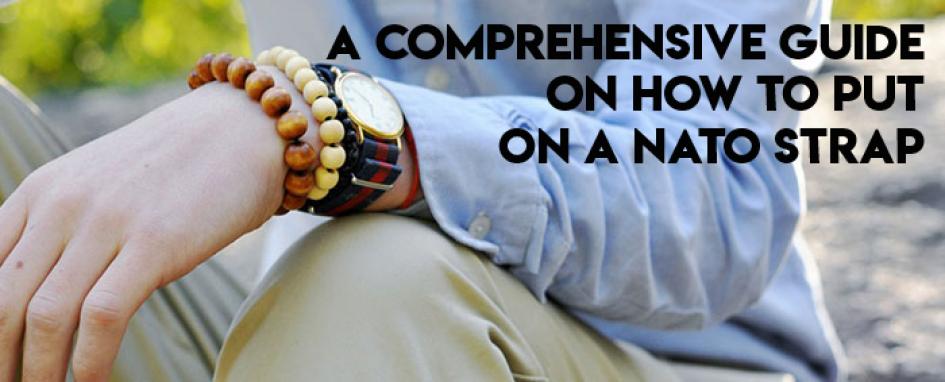
You’ve got to love the NATO strap! Supremely comfortable. Quickly interchangeable. Conveniently functional. And with a certain coolness to it that always has you strutting about like Bond himself.
The real beauty of these watch bands is just how versatile they are. Their relative inexpensiveness means you can have a couple of them and change the look of your watch as often as you’d like. And since NATOs seem to work on almost everything, you can use the same $20 strap on a $50 or $500 timepiece and still have those compliments streaming in.
They’re pretty much the little black dress equivalent of watches; without causing creepy guys to send cheap drinks your way all night.
So without further ado…
We present to you “A Comprehensive Guide to Wearing a NATO Strap“.

You just might be rocking one as you read this and you don’t even know it.
Simply put, a NATO is a pass-through strap made from one piece of material. It passes over the spring bars and under the case, unlike 2-piece straps that are hinged on spring bars between the lugs.
Standard NATOs have a fixed metal buckle, 2 ring keepers, and a secondary strap. One keeper is used to hold the tail in place after fastening.
The other is attached to the secondary strap and is used to loop through the primary strap after passing it over the bars and under the case.
And don’t think the secondary strap is just there to waste your data streaming YouTube videos trying to figure out how to correctly attach the darn thing.
It forms a little pocket that reduces the distance through which the case can move, effectively keeping it in place no matter how much you move your hands.
Once you start collecting NATO straps- and trust us, you will- you’ll come across all types and variations of the bands.
You have Zulu, Army, RAF, Bond, Bund straps, and probably a couple more with really cool-sounding names. They just differ in material, thickness, styling, and number of keepers used. But they all have their roots in the first generation of NATO straps that can be traced back to the early 70’s.
Time for a history lesson people!

Just like the internet, super glue, and duct tape, we have the military to thank for NATOs. Oh yeah, super glue was invented by the military! Story for another day.
But unlike the name suggests, the bands don’t have much to do with the NATO forces. It’s actually the British military that’s largely behind them. Modern NATO straps are based on those issued by the British Ministry of Defense back in 1973.
Original bands were made using nylon because of its durability, with the under-the-case design favored for its functionality.
Even if one of the spring bars broke, the case would still be held in place by the remaining one. Back then the straps just came in one color: admiralty grey, had a brass buckle and keepers plated in chrome, and were 20mm in width.
So why are they called NATOs again?
It’s simply because the straps have a NSN or NATO stock number that identifies them.
We just gave you enough ammo to blow everyone away on that watch forum, you’re welcome.
Source: https://watchient.com/nato-straps/